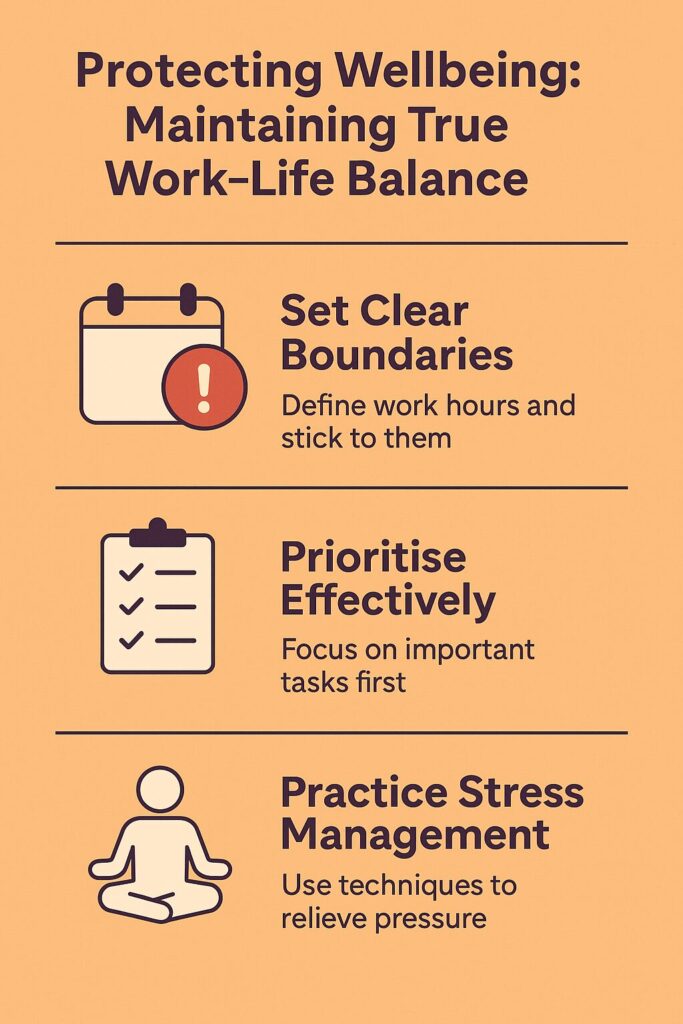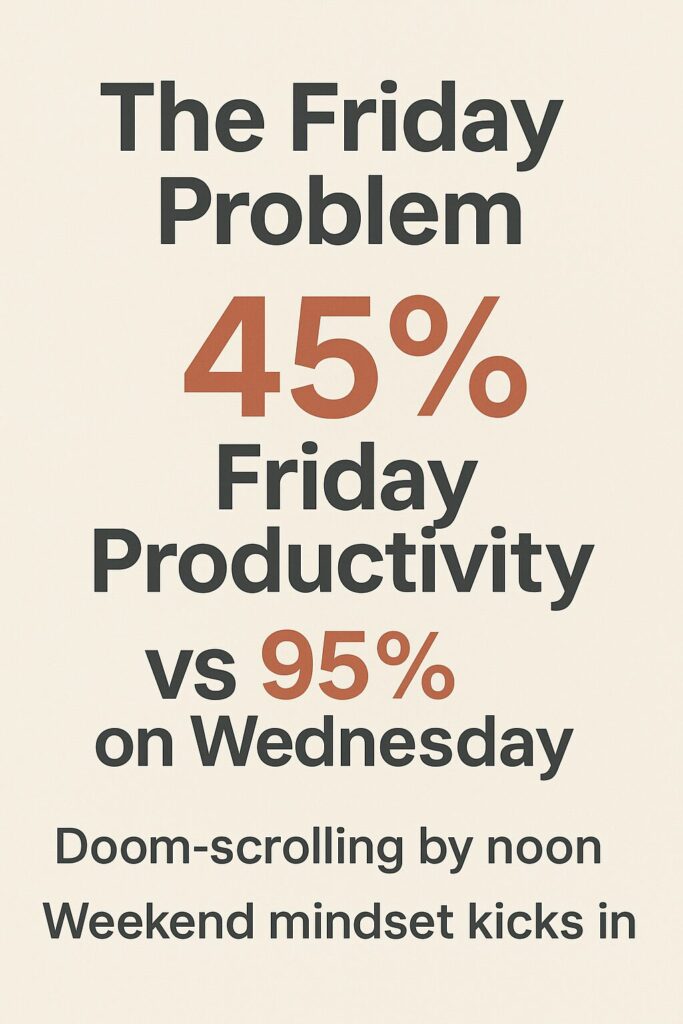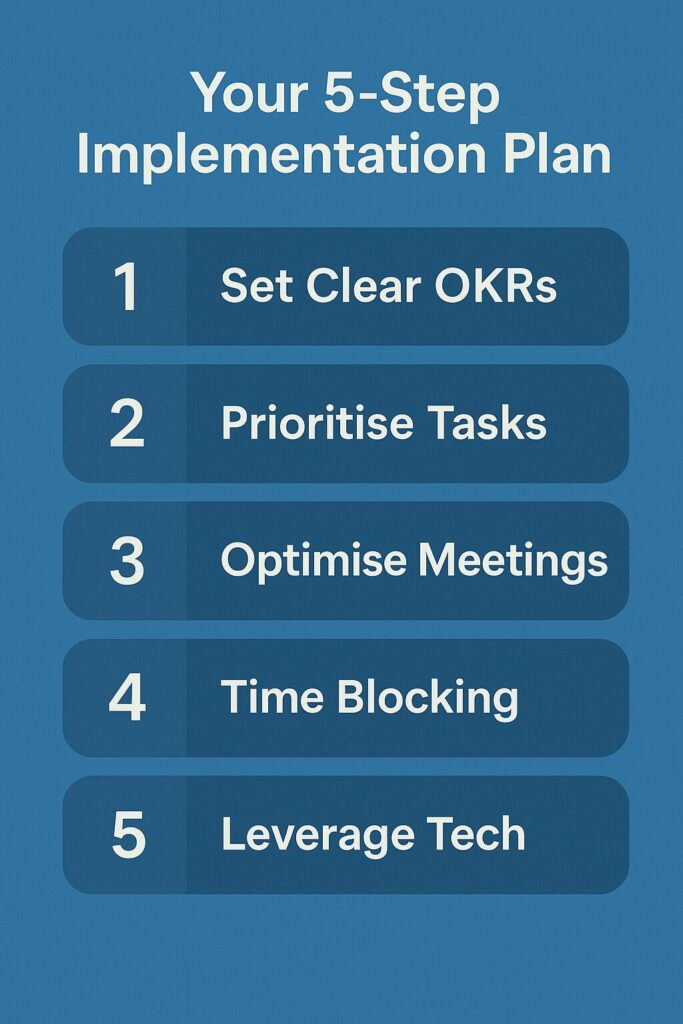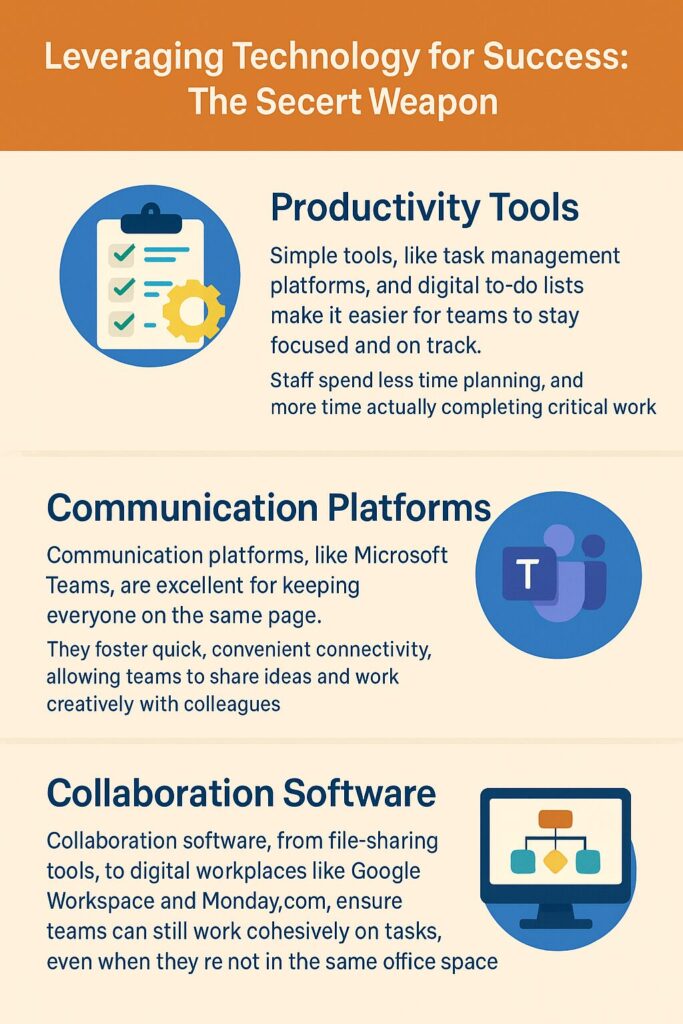It’s not just about enhancing work-life balance, or embracing new flexible working trends. The four-day work week encourages staff to accomplish more with less, cutting operational costs, banishing burnout, and igniting creativity. Studies even show that a compressed work week can lead to a 25% increase in revenue, and a 32% reduction in employee turnover.
But there are hurdles to overcome. We all remember how difficult it was to transition to remote and hybrid work for the first time during the pandemic. Moving to a four-day work week can be tricky too. The good news? All you need is the right strategy.
Since we’ve already successfully implemented the four day work week ourselves – we’re here to share our secret playbook and productivity tips with you, so you can side-step the challenges, and revolutionise work, once and for all. Let’s dive in.
Quick Navigation
- Why the Four-Day Work Week is a Game Changer
- Challenges of the Four-Day Work Week
- Implementing the Four-Day Work Week: Tips for Success
- The Four-Day Work Week is Here – Are you Ready?
- Join Our Four-Day Work Week Revolution
Why the Four-Day Work Week is a Game Changer
We know what you’re thinking – surely fewer hours in the office means less productivity right? Wrong. The truth is that Fridays are dead weight.
By noon, half the office is doom-scrolling, the other half is in a meeting that could’ve been a Slack message, and your team’s creative neurons have already shifted into weekend mode. Studies prove it – productivity actually drops to its lowest point on Friday afternoons.
As I’ve written before, Thursday really is becoming the new Friday in the modern workplace – and for good reason.
It’s not just a drop in overall productivity that creates problems – employee satisfaction suffers. 42% of companies clinging to a 5-day work week saw higher attrition rates in 2023, while companies with compressed work weeks benefitted from happier, more engaged teams.
Key Insight: Microsoft Japan saw a 40% boost in productivity when they switched to the four-day work week, and companies across Iceland found burnout issues significantly reduced with a compressed work week.
That comment on burnout is important, particularly when around 63% of employees are suffering from exhaustion (84% for Gen Z). You could even be losing out on top talent by avoiding flexibility, as 62% of workers say a four-day work week is one of the top benefits they search for.
The reality is that fewer days at work doesn’t mean that less work gets done. It means that teams use their time more efficiently, preserve their energy and creativity, and focus more effectively.
If you’re still making your team suffer through useless Fridays – don’t be surprised when they start looking for a company that’s willing to evolve.
Challenges of the Four-Day Work Week
Taking a new approach to nurturing work-life balance for employees isn’t easy. We’ve been doing it for over a year now – and even we faced some challenges at first, despite the fact that we already embraced a fully remote working model. There are challenges to consider, such as:
No One-Size Fits-All Strategy
For industries that require constant coverage – think healthcare, emergency services, or customer support – a four-day workweek can be a logistical nightmare. Ensuring that someone is always available for clients or patients might mean staggering employee days off, which can lead to scheduling headaches and potential burnout.
Potential for Longer Days and Resistance
To maintain the same level of productivity in fewer days, employees might end up working longer hours each day. This can disrupt daily routines, increase stress, and ironically, lead to the very burnout the four-day week aims to reduce.
Team Coordination Chaos
Chances are you’ll need to adjust schedules so someone is always available in your team to handle critical tasks, which means that not everyone will be off the same day. This leads to some scheduling issues – fostering team collaboration and arranging meetings can be challenging.
Implementing the Four-Day Work Week: Tips for Success
Obviously, implementing the four-day work week has its challenges – that’s probably why numerous companies in the UK cancelled their four-day initiative after a trial, even though 100% said that it led to positive results. The good news? We have the flexible working tips you need to make your strategy a success. Here’s what you need to master.
Adapting Your Work Style for a Four-Day Work Week
Ok, let’s start with the basics. Transitioning to a four-day work week doesn’t mean cramming five days of tasks into four. It’s about working smarter, not harder. That kind of shift requires a significant change in strategy and mindset.
Here’s how we manage flexible working seamlessly at Today Digital:
Setting Clear Objectives
Start by implementing Objectives and Key Results (OKRs) to align your efforts with company goals. Goal setting is notoriously valuable. It helps with work planning, time management, and keeping your teams on the same page.
Prioritise Like a Pro
With less time, prioritisation becomes crucial. One excellent framework for this is mastering remote work with the MoSCoW method, which helps categorise tasks by importance and urgency. You can also adopt methods like the Eisenhower Matrix, which categorises tasks into four quadrants:
- Urgent and Important: Do these tasks immediately.
- Important but Not Urgent: Schedule these tasks.
- Urgent but Not Important: Consider delegation.
- Neither Urgent nor Important: Forget these tasks.
Optimise Meeting Schedules
Meetings can be productivity killers. We still have meetings regularly here at Today Digital – just like you. However, we minimise unnecessary gatherings by implementing strict agendas and time limits.
Adopt Time Blocking
Allocate specific time slots for different activities. For example, dedicate mornings to deep work and afternoons to collaborative tasks.
Focus on Continuous Improvement
Work planning should be a dynamic process, as team members embrace new productivity techniques, and time management methods. As you continue to embrace the four-day work week, assess what’s working and seek feedback.
Creating Your Ideal Workspace for the Four-Day Work Week
Creating the perfect workspace in today’s hybrid working world is like crafting your personal productivity haven. Whether you’re dialing in from home or collaborating in a shared office, setting up an environment that fuels efficiency and keeps team connections strong is key.
Not everyone benefits from the same remote work setup, and if you’re still maintaining physical work spaces, you still need to consider things like office ergonomics, and fostering collaboration.
Nailing the Remote Work Setup
Team members working from home (even occasionally) – shouldn’t be working from the sofa. Employees need more than just a space to park their laptop.
Mastering Office Ergonomics
A great workspace for the four-day work week should give employees more than just the tools and resources they need for things like content planning tasks, or research. People need comfort.
Designing Collaborative Spaces
In the office, fostering collaboration is crucial – particularly when teams aren’t always around at the same time. Create areas that encourage teamwork- think open layouts with comfy seating and tech-equipped meeting rooms.
Keeping the Team Spirit Alive Across Time Zones
When your team is scattered across different locations and time zones, communication is your best friend. Use tools like Slack or Teams for real-time chats and project management apps to keep everyone in the loop.
Fostering Connections Beyond Work
Building relationships isn’t just about work talk. Organise virtual coffee breaks, team-building activities, or occasional in-person meet-ups if possible.
Protecting Wellbeing: Maintaining True Work-Life Balance
Ensuring team members maintain work-life balance in the flexible working world is about more than just giving them extra time to spend on their hobbies and passions. Encouraging teams to use the four-day work week effectively, to invest in their mental health, stress management, and burnout prevention, leads to happier, more productive employees.
Research Finding: In one trial in Spain, 71% of participants reported reduced levels of burnout by the end of the trial.
But teams need to reset from the always-on mindset.
Encourage staff members to:
Set Clear Boundaries
Ensure everyone has a clear schedule set out, and make sure they stick to it. When the workday ends, resist the urge to email team members about tasks that need to be completed urgently.
Prioritise Effectively
With compressed hours, effective time management becomes essential. Prioritising tasks and setting realistic goals can help manage workload efficiently.
Practice Stress Management
Help teams invest in burnout prevention with stress management techniques. Encourage them to look after their mental health, by spending more time outdoors, exercising, or meditating.

Using the Extra Day Effectively
Technically, your team members should be free to use their extra “free day” however they like. But it’s worth giving them some inspiration on how they can use their time to improve their physical and mental health.
Take our technology journalist Floyd March, whose passion for both journalism and personal growth exemplifies how our team members use their extra day to pursue meaningful activities that enhance their professional capabilities.
Similarly, our Head of CX Today, Charlie Mitchell, demonstrates how the four-day week enables deeper focus on both strategic work and personal development – creating a virtuous cycle that benefits both our employees and our publications.
Our Customer Success Manager, Alice Wrigley, uses her extra day to focus on professional development and creative pursuits that ultimately enhance her ability to serve our clients better.
Other team members use their time differently:
Want to really inspire your teams? Ask them to share how they’re using their time in regular meetings – it’s a great way to help staff forge connections, and introduce them to new ideas for how they can use the four-day work week to grow.
Leveraging Technology for Success: The Secret Weapon
One of the reasons now is the perfect time to embrace the four day work week, is that we actually have the tools we need to make it work. Automation, artificial intelligence, and cloud-based tools ensure we can accomplish more with less time.
At Today Digital, for instance, we use technology to transform every work process:
By embracing technology, our team members can free up the mental bandwidth they need for strategic planning and creative execution.
Beyond embracing AI and automation, experiment with a range of productivity tools, communication platforms, and collaboration software:
Productivity Tools
Simple tools, like task management platforms, and digital to-do lists, make it easier for teams to stay focused and on track.
Communication Platforms
Communication platforms, like Microsoft Teams, are excellent for keeping everyone on the same page. They foster quick, convenient connectivity, allowing teams to share ideas and work creatively with colleagues.
Collaboration Software
Collaboration software, from file-sharing tools, to digital workplaces like Google Workspace and Monday.com, ensure teams can still work cohesively on tasks, even when they’re not in the same office space.
The Four-Day Work Week is Here – Are you Ready?
Realistically, the four-day work week isn’t just a passing trend. Countless governments worldwide are actively encouraging companies to shift into this new mindset. We’re discovering, time and time again, that a compressed work week is more flexible, sustainable, and beneficial to teams.
As burnout continues to accelerate, and new generations enter the office, the chances are that the four-day work week will become the new flexible working reality for countless companies. That’s particularly true in the tech industry – where teams already have access to the tools they need to thrive in a “non-traditional” work environment.
At Today Digital, we’ve seen first-hand how the shift to the four-day work week supports our people, boosts productivity, and increases engagement. Our teams come back from each long weekend more creative, energetic, and recharged.
They actually have time to live- whether that means hitting the gym, diving into passion projects, or just spending more time with family. Yes, making the change takes planning. Yes, it requires a shift in mindset. But the payoff? A happier, more motivated workforce and a company culture that thrives.
If you’re on the fence, consider this: the companies embracing the four-day work week are the ones attracting top talent, boosting retention, and driving real results. The future of work isn’t about grinding—it’s about working smarter, not longer.
Join Our Four-Day Work Week Revolution
Having reflected on our journey to implementing the four-day work week at Today Digital, I’m incredibly proud of what we’ve achieved. This isn’t just a workplace perk – it’s transformed how we operate, creating a more engaged, creative and productive team.
I believe passionately that work should enhance life, not consume it. That’s why I’m excited to invite talented professionals to join our growing team and experience the Today Digital difference for themselves.
If you’re looking for a workplace that truly values your wellbeing, creativity and work-life balance, I’d encourage you to explore our current opportunities.
Ready to reclaim your Fridays and join a company that’s redefining the future of work? Check out our careers page for all our latest four-day work week vacancies.












